Joannis Avramidis
We cordially invite you to a virtual tour of our exhibition "SILENCE – STILLE":
The exhibition "SILENCE – STILLE" will be accompanied by a fully illustrated catalogue (60 pages, Euro 10).
You also have the possibility to leaf through the cataloque (PDF) virtually here.
Works of art

Joannis Avramidis
(Batumi 1922 - 2016 Wien)
"Mittlere Figur II"
Bronze 1963
80,2 x 12 cm x 16 cm
sign. num. bez.
Auflage 7 Exemplare
[27278]

Joannis Avramidis
(Batumi 1922 - 2016 Wien)
"Kleine Kreisgruppe"
Bronze 1963
40,5 x 40 cm x 40 cm
sign. num.
Auflage 6 Exemplare
[27119]

Joannis Avramidis
(Batumi 1922 - 2016 Wien)
"Modell für eine Säule"
Bronze 1963
75,9 x 6,5 cm x 5,2 cm
sign.
Auflage 6 Exemplare
[27286]
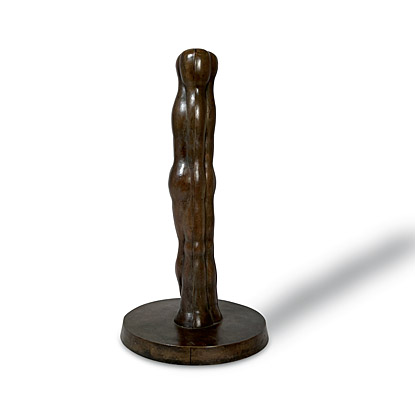
Joannis Avramidis
(Batumi 1922 - 2016 Wien)
"Kleine Figur II"
Bronze 1963
40,5 x 7,5 cm x 7,5 cm
sign. num. bez.
Auflage 6 Exemplare
[27282]

Joannis Avramidis
(Batumi 1922 - 2016 Wien)
"Kleine Humanitassäule I"
Bronze 1963/1986
115,5 x 25 cm x 25 cm
sign. num.
Auflage 6 Exemplare
[27284]

Joannis Avramidis
(Batumi 1922 - 2016 Wien)
"Kleine Zweifigurengruppe"
Bronze 1964
40,3 x 11,5 cm x 11,5 cm
sign. num.
Auflage 6 Exemplare
[27280]
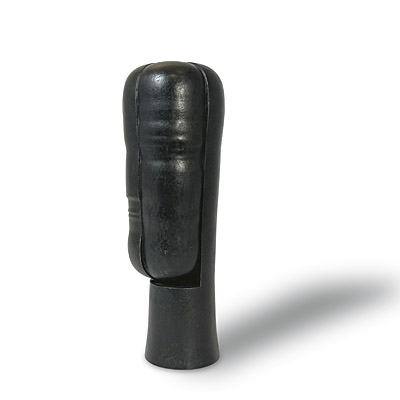
Joannis Avramidis
(Batumi 1922 - 2016 Wien)
"Kopf II"
Bronze 1966
34 x 11,5 cm x 11,5 cm
sign. num.
Auflage 6 Exemplare
[27287]

Joannis Avramidis
(Batumi 1922 - 2016 Wien)
"Kopf mit tiefenräumlichen Flächen III"
Bronze 1969/70
44,3 x 14,8 cm x 25,5 cm
sign. num.
Auflage 6 Exemplare
[27289]

Joannis Avramidis
(Batumi 1922 - 2016 Wien)
"Kopf das trojanische Pferd"
Bronze 1970
36 x 25,4 cm x 41,5 cm
sign. num.
Auflage 6 Exemplare
[27283]
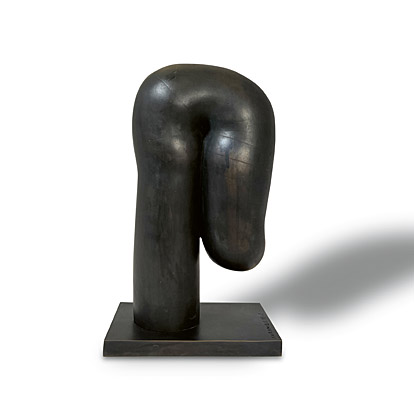
Joannis Avramidis
(Batumi 1922 - 2016 Wien)
"Kopf"
Bronze 1972
39 x 10 cm x 22 cm
sign. dat.
Auflage 6 Exemplare
[27288]
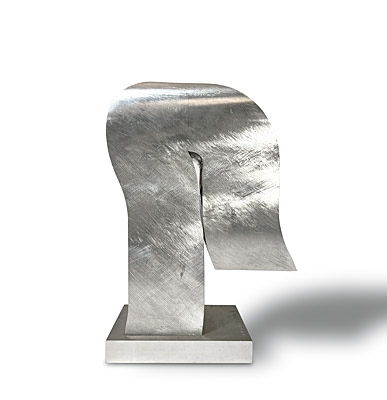
Joannis Avramidis
(Batumi 1922 - 2016 Wien)
"Bandkopf I"
Aluminium massiv Kaltarbeit 1972/81
39,7 x 15,7 cm x 27,5 cm
sign. num. dat.
Auflage 6 Exemplare
[27279]

Joannis Avramidis
(Batumi 1922 - 2016 Wien)
"Bandkopf II"
Aluminium massiv Kaltarbeit 1981/82
37 x 14,8 cm x 24,2 cm
sign. num. dat.
Auflage 6 Exemplare
[27281]
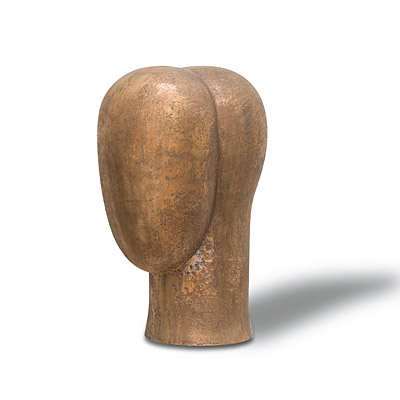
Joannis Avramidis
(Batumi 1922 - 2016 Wien)
"Kopf"
Bronze 1996
40 x 20 cm x 25 cm
sign. num.
Auflage 6 Exemplare
[27120]

Joannis Avramidis
(Batumi 1922 - 2016 Wien)
"Rechter Halbkopf"
Kunstharz auf Aluminiumkonstruktion 2003
40,8 x 22,8 cm x 11,5 cm
sign. num.
Auflage 6 Exemplare
[27285]
Biography
Joannis Avramidis
1922
Joannis Avramidis is born on September 26 in Batumi, Georgia, on the Black Sea. In 1916 his mother, Eleni (née Triantafilidis), had fled to the Russian Empire to escape the oppression of the Greek minority in the Ottoman Empire. Father Konstantin, on the other hand, is a Black Sea Greek, whose family has lived in Georgia for generations. He is a merchant, ship owner and floriculturist. Joannis has three younger siblings: Georgette, Thomas and Sofia. Beginning in the late 1960s, Thomas will often assist his brother with the manual execution of his sculptures.
1936
Against the wishes of his father, the 14-year-old Joannis Avramidis begins studying painting at the State Art School in Batumi. His primary subjects are still lifes and head studies, but the students at the school are also tasked with producing Stalin portraits.
1937
In the course of the persecution of national minorities by the Stalin regime, the artist's father is arrested and soon thereafter murdered. Joannis Avramidis is to be arrested as well, but his mother is able to prevent this; in his place, officers of the NKWD apprehend an older cousin. As the son of a "politically unreliable person", Avramidis is unable to accept the scholarship offered to him by the Russian Academy of Arts in St. Petersburg (known at that time as Leningrad).
1939
Avramidis drops out of art school and, together with his mother and siblings, emigrates to Athens, where his mother's family lives. Officially recognized as a refugee, the 17-year-old attends high school there and supports his family by taking odd jobs. It is in Athens that he has his first direct encounter with Greek antiquity, which is to have an enduring influence on the artist.
1941
After a series of military battles in April and May, Greece, which the previous year was able to fend off an attack by Italy, is occupied by German troops. For the time being, the Avramidis family is not affected by these events.
1942
Avramidis finishes high school. His family moves to northern Greece, where Black Sea refugees are provided with land for building houses. Avramidis is able to support his family by furnishing the houses of wealthy Albanians residing there with frescoes.
1943
In spring, Avramidis is conscripted and transported in a freight car, along with a group of other young Greeks, to Vienna as a "foreign laborer." He works until the end of the war in a repair shop in Kledering on the outskirts of the city, where he is responsible for the maintenance of rail vehicles.
1945
After the war, the Soviet occupation authorities classify Avramidis as "suspicious" due to his proficiency in Russian and deport him to an internment camp near Budapest. He is able to escape and return to Vienna, where he decides to resume studying painting. In July he is accepted into the master class of Robin Christian Andersen (1890–1969) at the Academy of Fine Arts, where he meets artists such as Ernst Fuchs, Erich (later Arik) Brauer, Giselbert Hoke and Kurt Absolon. Andersen introduces Avramidis to early Renaissance painting, most importantly to works by Masaccio and Piero della Francesca. For the time being, however, Avramidis's painting does not reflect these new insights: in his works from his years as a student – largely reduced landscape depictions and intimist subjects – Avramidis shows a preference for melancholy moods more associated with pittura metafisica. Andersen's teaching is particularly influential in his emphasis of compositional structure and the reduction of the palette to local colors.
1948
Avramidis makes his first charcoal drawings of Cubic Heads.
1949
Avramidis completes his painting studies and begins studying at the Master School of Conservation and Technology, directed by Robert Eigenberger (1890–1979).
1951
Avramidis meets the restorer Waltraud Rathofer, whom he marries the following year, and from whom he separates in 1955.
1953
At the Danube River's Winter Harbor, Avramidis creates his first sculpture: a head of quarry stone (now in the collection of the National Gallery in Athens). He shows this work to Fritz Wotruba (1907–1975), who since his return from exile in Switzerland teaches in Vienna, exerting a lasting influence on several generations of Austrian artists in Vienna's "biotope for sculpture" (Otto Breicha). Avramidis is subsequently accepted into Wotruba's sculpture class at the Academy of Fine Arts, where he is provided with his own studio. His fellow students include Andreas Urteil, Alfred Hrdlicka, Alfred Czerny, Erwin Reiter, Franz Anton Coufal, Leopold Höfinger, Roland Goeschl and Oswald Oberhuber.
1954
While Small Half-Figure, due to its additive cubic structure, still displays a kinship with Fritz Wotruba's works, the Torso and Head bronzes mark the beginning of an independent development toward a carefully calculated multi-axiality of the figure. Particularly the nude drawings and the proportion schemes for sculptures reveal a tendency toward an exact segmentation of the limbs.
1955
Avramidis becomes an Austrian citizen. He makes a study trip to Paris, where he becomes friends with the writer and translator Jean-Claude Hémery (1931–1985).
1956
After completing his studies, Avramidis receives the State Prize of Vienna's Academy of Fine Arts. He participates for the first time in a group show: at the XXVIII Biennale of Venice, his Figure (stone) and Study (bronze) are exhibited along with the works of eleven other Austrian painters and sculptors.
1957
Avramidis begins to design his sculptures according to mathematical calculations; Leg is the first sculpture produced purely through this process. Galerie Würthle presents Avramidis's first solo exhibition. The artist meets the sculptor and writer Annemarie Persche, who will later become his second wife.
1958
In his Large Figure the sculptor for the first time defines the body systematically as a coupled column, which is to become one of his most important formal principles for the coming decades. Avramidis receives the Austrian Sponsorship Award ((Österreichischer Förderpreis) for sculpture.
1961
Avramidis receives the Sponsorship Award of the City of Vienna (Förderpreis der Stadt Wien), the Hugo von Montfort Preis (Bregenz) and the Prize of the Federation of Austrian Industry.
1962
At the XXXI Biennale of Venice, Austria is represented by Avramidis and Friedrich (later Friedensreich) Hundertwasser. Avramidis exhibits 22 sculptures. The 61-year-old Alberto Giacometti, who is the subject of a major retrospective at that same time in Venice, visits the Austrian pavilion and praises the "the quality and drama" of the younger sculptor's work. Giacometti's friend Franco Russoli, Director of Milan's Pinacoteca di Brera, later elaborates on this comment, remarking that he sees in Avramidis's work "the constantly recurring image of solitude, the search for a refuge in the embrace of humans who are trapped in their own inability to communicate."
1963
In his Columns workgroup, Avramidis begins to develop the vertical continuum of the body axes in a mirror image.
1964
Receives the City of Vienna Prize (Preis der Stadt Wien).
1965
Avramidis takes over Herbert Boeckl's class for nude drawing at Vienna's Academy of Fine Arts, which he directs until the following year. He begins work on Polis and makes the first sketches for Temple; they call for a circular wall of columns developed from the Polis group, in the middle of which stands the Modeled Figure of 1958.
1966
Avramidis is appointed guest professor at the Academy of Fine Arts in Hamburg. His interest in the depiction of moving bodies, which became apparent, at the latest, in his 1962 drawings and gained impetus particularly through his work with the students of the class for nude drawing in Vienna, gives birth to the first Band Figures. He incorporates them into the works he creates on paper in Hamburg both orthogonally as well as in an undulating manner.
1967
Returns to Vienna.
1968
Avramidis is offered professorships at the State Academy of Art in Berlin and at the Academy of Fine Arts in Vienna. The artist chooses Vienna, where he is given a master class for sculpture. He becomes a member of the Vienna Secession and is awarded the Will Grohmann Prize of the City of Berlin. For the opening of the Neue Nationalgalerie am Kulturforum in West Berlin, the sculpture Polis (1965–1968) is to be installed in front of the exhibition building. However, this installation is not carried out until two years later.
1971
The painter Günter Fruhtrunk (1923–1982) attempts to convince Avramidis to accept a professorship at the Academy of Fine Arts in Munich. In a letter declining the invitation, Avramidis indicates a fundamental interest in a new artistic environment but stresses the hardship of working at two different locations, and in particular refers to the guidelines of the description of the position: "I am somewhat disconcerted by the passage' Development of new teaching methods and training programs,'" because, as he wrote, "every methodology produces a perhaps useful or also necessary mediocrity."
1973
Avramidis is awarded the Prize of the Small Sculpture Biennale of Budapest and is named a member of the Austrian Art Senate. At the presentation of the Grand Austrian State Prize to Avramidis, Fritz Wotruba gives an introductory speech in which he remarks that "Avramidis is not only the talent of his generation in Austria, but certainly in Germany as well, and he is one of the few great sculptors of our time."
1982
As part of the Festwochen exhibition of the Vienna Secession, Large Column (1963) is installed in front of the Hofburg on Michaelerplatz.
1985
Avramidis is appointed a member of the "Kurie für Kunst." His Large Group of Three Figures (1980) for Agora is permanently installed on the Marktplatz in front of the town hall of Heilbronn, Germany.
1992
Avramidis retires from his teaching.
1997
At the beginning of the year a retrospective is devoted to Avramidis at the French Institute of Thessaloniki (European Capital of Culture). A more extensive presentation of his works is subsequently held from July to September at the National Gallery in Athens. The gift that the artist made to the National Gallery in advance of the exhibition includes 53 sculptures, 11 paintings and 104 drawings.
1998
Avramidis is named a Corresponding Member of the Academy of Athens.
1999
Approximately at the same time the solo exhibition Heads is presented at Munich's Galerie Thomas, Avramidis's sculptures enter into a dialogue with works of classical antiquity as part of the exhibition A Greek among Greeks at Munich's Glyptothek.
2000
Avramidis is named a Corresponding Member of the Bavarian Academy of Fine Arts.
2002
On the occasion of the artist's eightieth birthday, Gustav Schörghofer notes in a speech that was published in the Austrian weekly newspaper Die Furche: "There are no exhibitions being held in honor of this momentous birthday. We are still waiting for some official expression of appreciation. But perhaps the old Greek is not even waiting for this any longer. He always kept his distance from the state and from the entire cultural industry anyway. In his eyes, the appreciation of individuals will carry more weight."
2012
On the occasion of his ninetieth birthday, Avramidis is honored with two retrospectives in Vienna: in the Collection of Greek and Roman Antiquities of the Kunsthistorisches Museum (Halls X to XIII) and at Galerie bei der Albertina Zetter.
2013
Avramidis receives the Grand Decoration of Honor in Gold with Star for his services to the Republic of Austria. Annemarie Avramidis, the artist's wife, dies in Vienna at the age of 73.
2014
In May Avramidis is awarded the Jerg Ratgeb Prize. The prize includes a retrospective at the City Art Museum Spendhaus in Reutlingen, in which primarily works on paper and small-scale sculptures are shown. In addition, large-scale sculptures are presented in the Bürgerpark by the new Stadthalle, on the redesigned grounds in front of the Tübing Castle Gate and in the garden of the City Museum.
2016
On 16 January, Joannis Avramidis dies, surrounded by his family, in Vienna.
Joannis Avramidis
(Batumi 1922 - 2016 Wien)
"Mittlere Figur II"
Bronze 1963
80,2 x 12 cm x 16 cm
sign. num. bez.
Auflage 7 Exemplare
[27278]
Joannis Avramidis
(Batumi 1922 - 2016 Wien)
"Kleine Kreisgruppe"
Bronze 1963
40,5 x 40 cm x 40 cm
sign. num.
Auflage 6 Exemplare
[27119]
Joannis Avramidis
(Batumi 1922 - 2016 Wien)
"Modell für eine Säule"
Bronze 1963
75,9 x 6,5 cm x 5,2 cm
sign.
Auflage 6 Exemplare
[27286]
Joannis Avramidis
(Batumi 1922 - 2016 Wien)
"Kleine Figur II"
Bronze 1963
40,5 x 7,5 cm x 7,5 cm
sign. num. bez.
Auflage 6 Exemplare
[27282]
Joannis Avramidis
(Batumi 1922 - 2016 Wien)
"Kleine Zweifigurengruppe"
Bronze 1964
40,3 x 11,5 cm x 11,5 cm
sign. num.
Auflage 6 Exemplare
[27280]
Joannis Avramidis
(Batumi 1922 - 2016 Wien)
"Kopf II"
Bronze 1966
34 x 11,5 cm x 11,5 cm
sign. num.
Auflage 6 Exemplare
[27287]
Joannis Avramidis
(Batumi 1922 - 2016 Wien)
"Kopf mit tiefenräumlichen Flächen III"
Bronze 1969/70
44,3 x 14,8 cm x 25,5 cm
sign. num.
Auflage 6 Exemplare
[27289]
Joannis Avramidis
(Batumi 1922 - 2016 Wien)
"Kopf das trojanische Pferd"
Bronze 1970
36 x 25,4 cm x 41,5 cm
sign. num.
Auflage 6 Exemplare
[27283]
Joannis Avramidis
(Batumi 1922 - 2016 Wien)
"Kopf"
Bronze 1972
39 x 10 cm x 22 cm
sign. dat.
Auflage 6 Exemplare
[27288]
Joannis Avramidis
(Batumi 1922 - 2016 Wien)
"Bandkopf I"
Aluminium massiv Kaltarbeit 1972/81
39,7 x 15,7 cm x 27,5 cm
sign. num. dat.
Auflage 6 Exemplare
[27279]
Joannis Avramidis
(Batumi 1922 - 2016 Wien)
"Bandkopf II"
Aluminium massiv Kaltarbeit 1981/82
37 x 14,8 cm x 24,2 cm
sign. num. dat.
Auflage 6 Exemplare
[27281]
Joannis Avramidis
(Batumi 1922 - 2016 Wien)
"Kopf"
Bronze 1996
40 x 20 cm x 25 cm
sign. num.
Auflage 6 Exemplare
[27120]
Joannis Avramidis
(Batumi 1922 - 2016 Wien)
"Rechter Halbkopf"
Kunstharz auf Aluminiumkonstruktion 2003
40,8 x 22,8 cm x 11,5 cm
sign. num.
Auflage 6 Exemplare
[27285]
Joannis Avramidis
Joannis Avramidis, a renowned sculptor of the 20th century, is considered one of the most significant representatives of abstract art. Born in 1922 in Greece, he came to Austria in 1943, where he studied painting at the Academy of Fine Arts in Vienna from 1945-1949. He left behind an extensive body of work that impresses with its unique visual language and its ability to touch the viewer.
Avramidis‘ sculptures are characterized by their abstract forms, which create a harmonious interplay between mass and void. His works exude a certain monumentality and invite the viewer to immerse themselves in the abstract world. At the same time, his sculptures convey a strong presence while emanating an inner tranquility.
The artist employs various materials such as bronze, stone, or wood to give his works an organic yet timeless quality. The curved forms and lines of his sculptures often appear dynamic, generating a tension-filled atmosphere. Through the combination of smooth and textured surfaces, Avramidis creates a fascinating tactile experience that entices the viewer to touch his sculptures.
Avramidis‘ works have been exhibited internationally and are represented in numerous prestigious collections. His influence on modern sculpture is undeniable, as he ventured into new paths with his abstract visual language and developed his own aesthetic.
Joannis Avramidis‘ artworks captivate with their timeless beauty and expressive power. Through abstraction, he manages to convey universal themes and emotions, transporting the viewer to a realm beyond the visible. His oeuvre remains an important reference in art history, continuing to inspire generations of artists and art enthusiasts.
